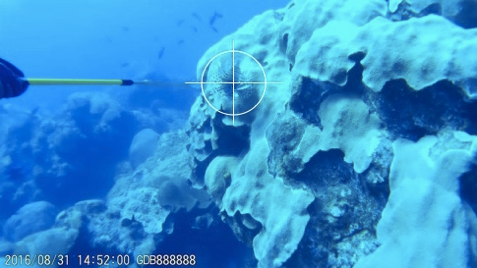An Aquatic Robot for Lionfish Remediation - AARISE
Abstract

The project goal is to develop a marine robot capable of locating, identifying and tracking invasive red lionfish (Pterois volitans). The robot accomplishes this using a deep learning machine vision algorithm as shown in this photo where a tracking circle has been applied to a detected lionfish.
Project PI
Dr. Harley Myler, Chair and Professor, Phillip M. Drayer Department of Electrical Engineering
Co-PI
Dr. Hassan Zargarzadeh, Assistant Professor, Phillip M. Drayer Department of Electrical Engineering
Full Description
Lionfish are an invasive species whose presence has significantly reduced native fish densities on coral reefs in US waters. The lionfish invasion, a consequence of aquarists releasing the fish into US waters, is considered to be one of the worst man-made ecological disasters ever witnessed. Current management strategies have focused primarily on culling lionfish from shallow reefs using recreation divers employing spearfishing techniques. According to the National Oceanic and Atmospheric Administration (NOAA), because lionfish feed on prey normally consumed by commercially important native species, their presence could negatively affect the well-being of valuable commercial and recreational fisheries. This project is developing a robotics solution to the lionfish problem that utilizes an autonomous marine robot under supervision by a human operator. Our research objective is to develop the requisite machine vision and control strategies to allow the robot to locate, identify and track lionfish without human interaction.
Funding
This project is funded by the Lamar University Center for Advancement in Air and Water Quality (CAWAQ).